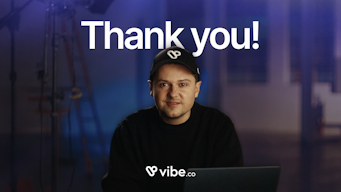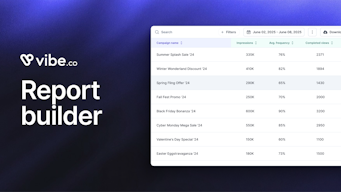Celebrate Hispanic Heritage Month on CTV
Yes, we know, it’s a month-long celebration that straddles 2 months and you almost miss it every year. Yeah, yeah, yeah… well stop it! We kid. But really, it’s time for advertisers to recognize Hispanic Heritage Month for the storytelling and audience-development catalyst it really is. Hispanic Heritage Month, which begins on Sept. 15 and runs through Oct. 15, is a key time for advertisers to work with new Spanish-language publishers, not only for this month, but as an introduction to a growing market with rapidly expanding buying power.
Trends and opportunities
Publishers and ad agencies specializing in hispanic media have long questioned why brands were so slow to embrace the growing opportunity of the hispanic market, especially since it’s been increasing for years. Hispanic demographic buying power has grown substantially over the last 30 years, from $213 billion in 1990 to $1.9 trillion in 2020, and accounted for 11% of U.S. buying power in 2020, according to the latest annual Multicultural Economy report from University of Georgia’s Selig Center for Economic Growth. And yet. 78% of Hispanic consumers don’t believe brands adequately target them, while 66% especially notice bilingual ad campaigns since they “finally reflect their own experience,” according to Hispanic digital media company H Code.
Advertisers ready to engage with this new audience segment - as they should - need to keep in mind that hispanic culture is not a monolith. More than ever, audiences expect authenticity and personalization, so slapping a couple of Fiesta graphics over an evergreen campaign won’t cut it. That’s where the strength of new advertising channels like CTV can make the most impact, with the power of big screen storytelling and hyper-targeted delivery. As hispanic audiences keep growing and CTV inventory matures, advertisers should think of this year’s Hispanic Heritage Month as a testing ground for campaigns that can engage a desirable demographic all year long.
CTV is especially suited for Testing and Targeting
Because CTV and OTT content are streamed over the internet rather than broadcast, household IP tracking allows DSPs like Vibe.co to target audiences at a granular level: by geolocation, gender, age, screen-type, and channel, of course, but also by interest, behavior, and 1st party data integration. That means that an advertiser can not only decide to target audiences on Telemundo or Univision, they could narrow their reach to Univision and Telemundo audiences who also recently looked up bachata music. That’s good to know if you’re promoting a bachata album but it’s also useful as a way to fine tune your messaging for, in this case, a Dominican audience.
For example, the popular music streaming platform Vevo recently launched a campaign to promote their hispanic artists by developing distinct, culturally relevant ad sets for each market. "Vevo viewership data shows that music videos by bachata group Aventura are 117% more likely to be viewed in New York, which makes sense given the large Dominican population there," says Vevo Vice-President of Multicultural sales Robert Vélez. .
Meanwhile, music videos by regional Mexican singer Robert Tapia are 104% more likely to be viewed in California, where nearly 40% of the population is Hispanic American, many of whom are of Mexican heritage. “So our targeting capabilities by artists or geography can really provide that incremental reach to traditional TV," he said.
It’s worth it for 2 main reasons.
- According to a recent Google survey, Hispanic audiences dramatically over-index versus most other cohorts in CTV consumption and under-index in traditional TV consumption. What a gift to actually know where to find your audience in today’s fraught digital landscape! That’s why it’s so important to make sure campaign creatives are up to par with culturally-specific messaging and a great use of audio.
- 85% of Hispanic and Latino consumers surveyed took an action after watching a CTV ad they considered inclusive and authentic. So not only do we know where to find our audience, we also know what makes them tick. Now it’s time to get to work.
How to make the most of it
While the promise of targeting granularity and cultural relevance can sound like the province of Fortune 500 companies with large creative budgets, it doesn’t have to be - especially around a celebration like Hispanic Heritage Month. Smaller local businesses or larger ones with several smaller locations should consider piggybacking on hispanic heritage celebrations in their communities - cross-marketing with local partners or developing CTAs link to specific community events.
Meanwhile, although it’s important to develop culturally relevant campaigns and target audiences accordingly on the channels that make sense for specific markets, advertisers need to keep up with a growing number of hispanic AVOD and FAST channels and work with partners who have access to their inventory; channels like Canela Media, Prende.tv, Vix, Vevo, FreeTV en español, Telemundo, or Univision, which all work with Vibe.co.
Although some may not be household names yet, their reach is undeniable: Canela Media launched a free, ad-supported streaming TV network for U.S. Hispanic audiences in May 2020, and Spanish-language TV network Univision followed suit with its ad-supported streamer PrendeTV in May 2021. In August 2021, Spanish-language YouTube videos in the U.S. generated more than 15.9 billion views, a 30% increase since 2018, according to Tubular Labs. So don’t miss out.


